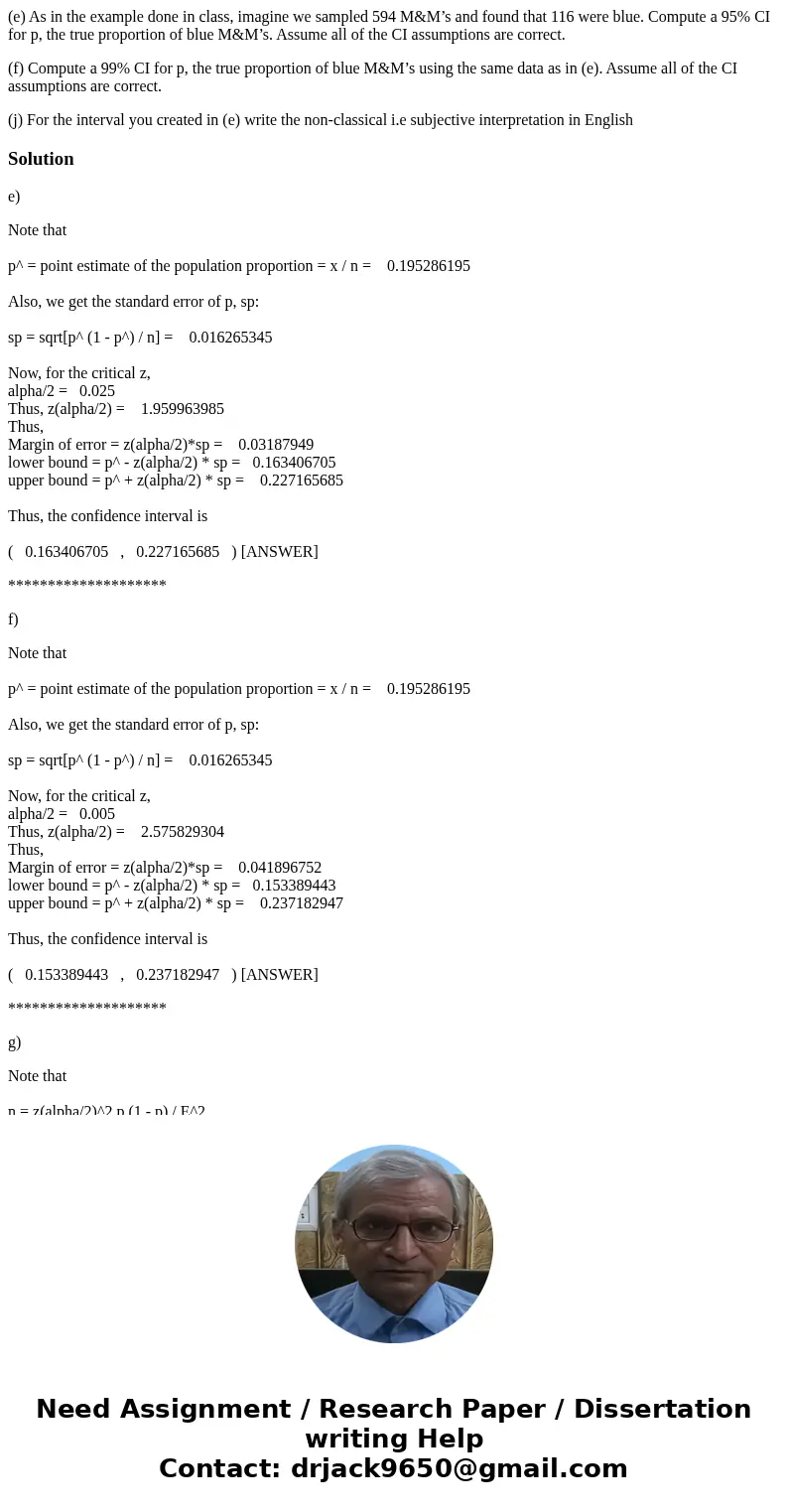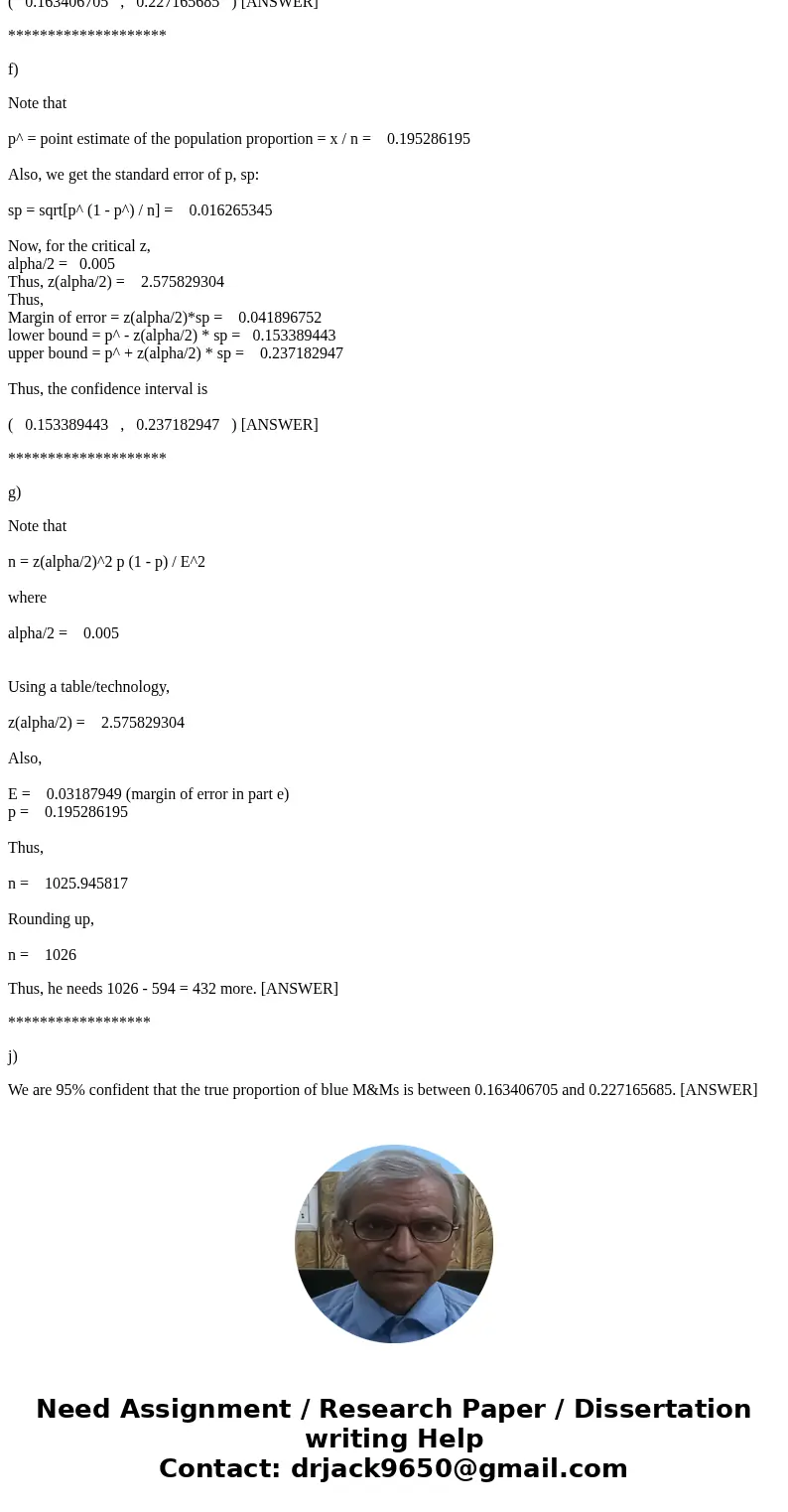e As in the example done in class imagine we sampled 594 MMs
(e) As in the example done in class, imagine we sampled 594 M&M’s and found that 116 were blue. Compute a 95% CI for p, the true proportion of blue M&M’s. Assume all of the CI assumptions are correct.
(f) Compute a 99% CI for p, the true proportion of blue M&M’s using the same data as in (e). Assume all of the CI assumptions are correct.
(j) For the interval you created in (e) write the non-classical i.e subjective interpretation in English
Solution
e)
Note that
p^ = point estimate of the population proportion = x / n = 0.195286195
Also, we get the standard error of p, sp:
sp = sqrt[p^ (1 - p^) / n] = 0.016265345
Now, for the critical z,
alpha/2 = 0.025
Thus, z(alpha/2) = 1.959963985
Thus,
Margin of error = z(alpha/2)*sp = 0.03187949
lower bound = p^ - z(alpha/2) * sp = 0.163406705
upper bound = p^ + z(alpha/2) * sp = 0.227165685
Thus, the confidence interval is
( 0.163406705 , 0.227165685 ) [ANSWER]
********************
f)
Note that
p^ = point estimate of the population proportion = x / n = 0.195286195
Also, we get the standard error of p, sp:
sp = sqrt[p^ (1 - p^) / n] = 0.016265345
Now, for the critical z,
alpha/2 = 0.005
Thus, z(alpha/2) = 2.575829304
Thus,
Margin of error = z(alpha/2)*sp = 0.041896752
lower bound = p^ - z(alpha/2) * sp = 0.153389443
upper bound = p^ + z(alpha/2) * sp = 0.237182947
Thus, the confidence interval is
( 0.153389443 , 0.237182947 ) [ANSWER]
********************
g)
Note that
n = z(alpha/2)^2 p (1 - p) / E^2
where
alpha/2 = 0.005
Using a table/technology,
z(alpha/2) = 2.575829304
Also,
E = 0.03187949 (margin of error in part e)
p = 0.195286195
Thus,
n = 1025.945817
Rounding up,
n = 1026
Thus, he needs 1026 - 594 = 432 more. [ANSWER]
******************
j)
We are 95% confident that the true proportion of blue M&Ms is between 0.163406705 and 0.227165685. [ANSWER]


 Homework Sourse
Homework Sourse